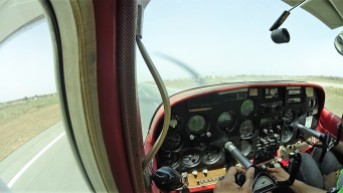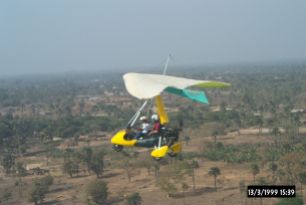Many thanks to Boldmethod for sharing… Source: Boldmethod
 GolfCharlie232
GolfCharlie232Seeing a sunset or sunrise from the cockpit is a view you’ll never forget. Here’s why they’re so stunning and full of color.
First, A Quick Review Of Sunlight
Sunlight, or visible light, can be thought of as a wave and a part of the electromagnetic spectrum. When the spectrum is split up, you see all the colors as a rainbow. Each visible color has a different wavelength along the spectrum. Blue light has the shortest wavelength at 300 nanometers. Red light has the longest at 700 nanometers. As visible light passes through the Earth’s atmosphere, small particles in the air can scatter shorter wavelengths more efficiently, like what you see on the left side of the diagram below.
During the day, blue light is the primary wavelength that’s scattered in the atmosphere, and only a portion of the blue light is scattered. But when the sun is low in the sky during sunrise or sunset, all of that changes.

“Scattering” Causes Colorful Sunsets
According to Steve Ackerman, a Meteorologist at the University of Wisconsin, Madison, “because the sun is low on the horizon, sunlight passes through more air at sunset and sunrise than during the day, when the sun is higher in the sky. More atmosphere means more molecules to scatter the violet and blue light away from your eyes. If the path is long enough, all of the blue and violet light scatters out of your line of sight. The other colors continue on their way to your eyes. This is why sunsets are often yellow, orange, and red.”
 Boldmethod
BoldmethodRed has the longest wavelength of any visible light, which is why the sun may appear red when setting directly on the horizon. The light has passed through the most atmosphere possible before reaching your eyes.
 GolfCharlie232
GolfCharlie232Why Are Some Sunsets More Colorful Than Others?
According to National Geographic, you may see more vibrant sunsets based on the seasons. In the east, fall and winter create incredible sunsets because the air tends to be dryer and cleaner for the path of sunlight. Pollution tends to mute and muddy the colors of sunsets because large particles in the lower atmosphere tend to have that effect. And in general, places with a lot of haze have less dramatic sunsets.
 Wikimedia
WikimediaWhy Sunsets Look So Great From The Air
When you’re flying through layers during climb or descent, you’ll find the best sunsets where the sun is clearly visible between multiple layers of clouds. When sunlight is sandwiched between cloud layers, it bounces off the clouds, further intensifying the sunset. That’s why sunsets often times seem more spectacular from the air. On top of that, cloud layers can create dramatic shadows on the ground, or on other cloud layers.
 Swayne Martin
Swayne MartinWhere have you seen the best sunsets or sunrises? Tell us in the comments below.
Become a better pilot.
Subscribe to the Boldmethod email and get real-world flying tips and information direct to your inbox, every week.


















































































